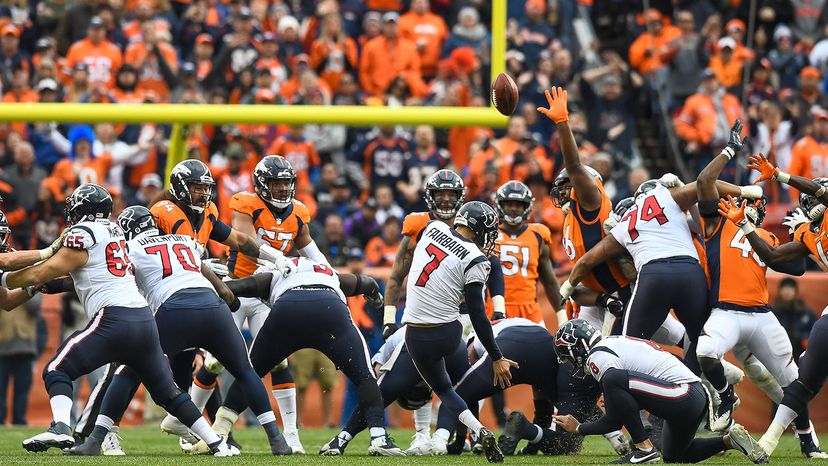To understand those crazy numbers, we'll need to talk about air density. Pretend you've got a jet pack. If you were to take off at sea level and travel through Earth's atmosphere in a straight vertical line, the density of the air around you would get lower as your altitude increased. This is due to a universal law: As the distance between two objects grows, the gravitational pull that they exert on each other lessens.
Air molecules are not exempt. The pull of Earth's gravity is more strongly felt by those that are closer to the planet's center. At or below sea level, gravitational attraction packs the molecules tightly together. And the weight of all the molecules sitting higher up in the atmosphere really bears down on the ones occupying low elevations. In consequence, the air itself grows denser.
Way up in the Mile High City, the air's only about 82 percent as dense as it is at sea level. A ball kicked skyward in Denver will therefore encounter fewer air molecules than it would in Miami. That's important to note because air molecules create drag.
Drag is a force that pushes against solid bodies as they travel through fluids or gasses. A punted or kicked football will run headlong into a steady barrage of air molecules. Their combined drag will slow it down, sometimes dramatically. But remember, in low density air, molecules are fewer and farther between. Therefore, footballs can — and often do — encounter less drag in Denver.
Yet kicking on the Broncos' home turf won't guarantee success for kickers or punters. Altitude reduces air density (and by extension, drag), but cold weather increases it. And boy, can Colorado get chilly.
A 2011 survey of NFL statistical records found that in outdoor games played at temperatures of 39.2 degrees Fahrenheit (4 degrees Celsius) or lower, field goal accuracy drops by 1.7 percent, while the average punt length is about 1 yard (0.91 meters) shorter than normal. (These findings hold true throughout the league.)
So it's to Matt Prater's credit that his record-breaking field goal split the uprights from 64 yards (58.5 meters) out even though Denver's temperature had fallen to 14 degrees Fahrenheit (-10 degrees Celsius) at the time.
Whatever the weather, kicking specialists need to be on guard against complacency. Denver's reputation as the mecca of ultra-long field goals is well-established across the league. According to Patriots great Stephen Gostkowski, that Mile High mystique can trick visiting kickers into overestimating their abilities.
When in doubt, always "air" on the side of caution.




